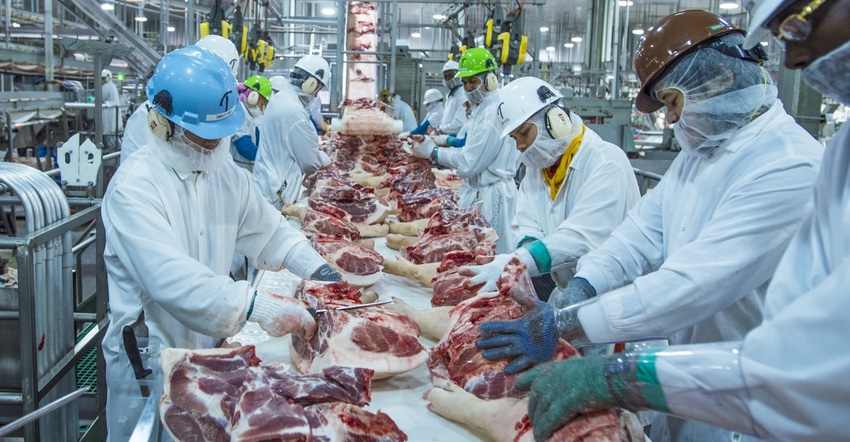
Hog processing facilities caught in the crosshairs of a court challenging slaughter line speeds may have an opportunity to again resume higher speeds as part of a limited-time trial to evaluate the impact on worker safety.
At the start of April, the U.S. District Court of Minnesota issued a decision in United Food and Commercial Workers Union, Local No. 663 v. U.S. Department of Agriculture which essentially threw out the elimination of line speed limits codified in a 2019 rule under the Trump administration because USDA did not adequately consider the impacts of the increased slaughter speeds on worker safety.
USDA’s New Swine Inspection System allowed for faster harvest facility line speeds. NSIS, initiated during the Clinton administration and evaluated at five pilot plants over 20 years, was approved for industry-wide adoption in 2019. NSIS modernized an inspection system that had remained unchanged for more than 50 years.
USDA Press Secretary Kate Waters said USDA consulted with the Occupational Safety and Health Administration and is inviting existing NSIS establishments to apply for a time-limited trial that would allow them to operate at an increased line speed for up to one year, during which time an establishment would implement worker safety measures included in an agreement with its workers’ union or worker safety committee.
“The trial will facilitate experimentation with different ergonomics, automation and crewing to design custom work environments that increase productivity and protect food safety while decreasing the probability of worker injuries,” Waters states. “During the trial, participating establishments will collect data that measures the impact of line speed on workers, which will be shared with OSHA and could inform future rulemaking in this area.”
The change in line speeds would result in a 2.5% loss in pork packing capacity nationwide, and more than $80 million in reduced income for small U.S. hog farmers, according to an analysis by Dermot Hayes, an economist with Iowa State University.
Food Safety and Inspection Service’s analysis shows that plants operating under the pilot program – HACCP Inspection Models Project or HIMP – averaged line speeds of 1,099 head per hour, with speeds varying from 885 head per hour to 1,295 head per hour.
FSIS states, “Although they are authorized to do so, market hog HIMP establishments do not operate at line speeds that are significantly faster than the current maximum line speeds for market hogs.” Maximum line speed for the traditional system is 1,106 head per hour.
FSIS compared establishment injury rates between HIMP and traditional establishments from 2002 to 2010. The preliminary analysis shows that HIMP establishments had lower mean injury rates than non-HIMP establishments. Plants that elect to operate under NSIS must provide safety attestations annually. In addition, FSIS inspectors have the authority to reduce speeds if they believe the line speed poses a worker safety risk, the North American Meat Institute stated following the ruling.
“Facilities participating in the NSIS program successfully implemented worker safety and food safety programs operating at faster line speeds, many of them for two decades. The Meat Institute and its members welcome this opportunity to restore lost production and help ease supply chain challenges but will need to examine further the specific requirements for participation in the limited trial,” says Sarah Little, Meat Institute vice president of communications.
Food & Water Watch Senior Staff Attorney Zach Corrigan criticized the Biden administration for “caving to industry pressure.” Corrigan adds, “The administration was right to accept a court decision throwing out the awful Trump administration rules that allowed slaughterhouses to ramp up their slaughter-line speeds. Unfortunately, they are now reversing course on this with a pilot program that continues to put industry profits over protecting the safety of our food supply.”
About the Author(s)
You May Also Like






